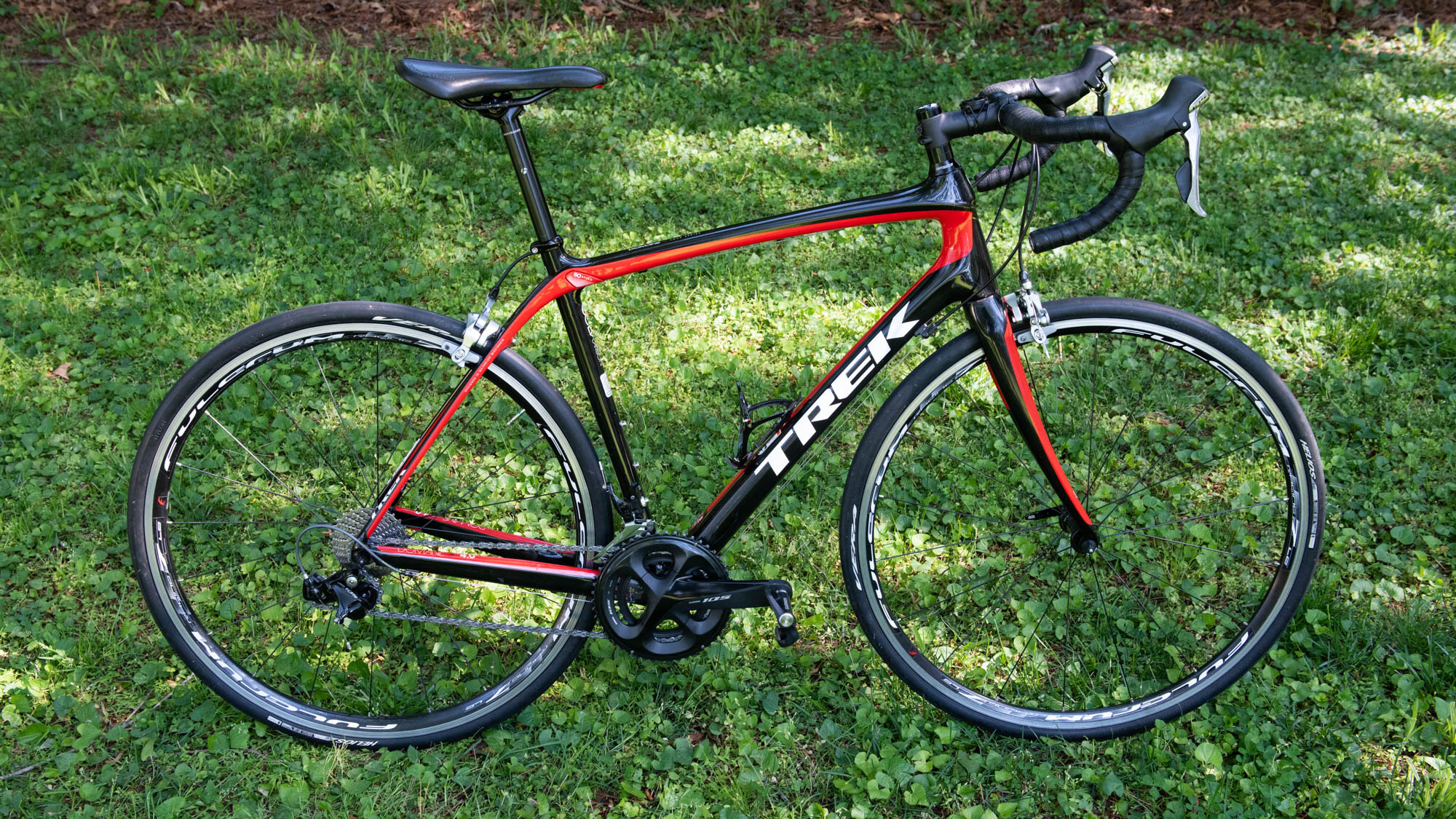Placebo effect of carbon wheels: I don’t even care if it’s faster. I feel faster!
Disclaimer: This post contains affiliate links, through which we earn a commission.
Regular followers of this blog will know that I’ve been changing things up on my road bike of late. In a post from a few weeks ago, I wrote about my failed bike experiment that involved turning my trusty old road bike into a monster triathlon machine. I’m happy to report that the bike is now back to its original state once again - with one exception...I fitted a pair of 50mm carbon wheels!
The E11Even 50mm carbon wheels to which I am referring are not a new addition to my bike stable and I’ve already put them through a full season of use. In fact, you will be able to find my detailed review of the wheel set here. These wheels are by no means the latest and greatest wheels on the market and if you check out my review, you may be surprised to know that I paid only $299, and bought them from Walmart. Yep, Walmart! Sure, these wheels don’t come with a spectacular spec sheet that can claim instant performance and aerodynamic benefits. That said, these wheels have blown me away at how fast they look and feel. After not having them on my bike during the winter season, I’d like to think that switching back to this wheelset has brought about immediate performance gains.
Note my wording in that previous statement in that the wheels “look and feel” fast. Clearly this relates to my perception of the wheels. This got me thinking, how much of my so-called instant performance gains comes down to the mental aspect? Today’s post is not intended as an extended-period review, but I’ll focus instead on the psychological benefits that a nice set of carbon wheels can provide, which in turn, might very well translate to increased performance benefits.
The Placebo Effect
To start things off, I think it’s important to note that individual preferences will vary quite a lot when it comes to the feelings that certain bike components create for cyclists. I have always been a massive fan of beautiful carbon wheels and without a doubt put this piece of cycling equipment right at the top of my list of parts that provide the highest degree of aesthetic appeal. In my mind, bikes are like art, and fitting a nice pair of deep section carbon wheels is like applying a vignette to a painting which then frames the rest of the bike perfectly. The point is that I clearly favor this particular piece of bike equipment, and this most definitely plays a part in how I ultimately interpret the performance that I receive from this product. By merely fitting a set of carbon wheels to my bike, it makes it look faster and this makes me feel faster - the very definition of the placebo effect.
But how can we confirm this? Psychological effects like the placebo effect are difficult to measure, and I will in no way claim that I am an expert in that particular field. Instead, I figured that I’ll tap into my background in finance and behavioral economics to explore some of the research that has been done and then try my best to relate that back to my carbon wheel fixation.
Psychological research
I can highly recommend that anyone looking for some intellectually challenging books to read should add Daniel Kahneman’s “Thinking Fast & Slow” or Richard Thaler’s “Misbehaving: The Making of Behavioral Economics” to their reading list. These are not quick reads, as there are tons of really neat references to academic psychology publications that require some careful digesting. It’s worth reading them chapter by chapter to let the information really sink in.
I bring up these books due to the applications that can be drawn from the psychological research, especially from the field of behavioral economics. This research has helped to explain why individual consumers act outside of the perfect (utility optimization) mindset that was previously assumed in economic models. The point is that books like “Thinking Fast and Slow” and “Misbehaving” really help to explain why humans act in an unexplainable manner or perceive things differently from what is expected. Let’s dive into a few examples and then pull it back to cycling to help analyze the placebo effect as it relates to cycling equipment (like carbon wheels).
The behavioral heuristics that make wheels feel faster
Heuristics? What is this guy going on about?! If you think that this topic has gone way off into the deep end, then stick with me. I’m going to walk you through 3 different types of psychological thinking patterns that can help explain why I might experience perceived performance benefits from my carbon wheel set. I’ll relate it back to cycling as we go along.
Let’s back up for a second to clarify what is meant by heuristics. The human brain wants to simplify thought processes as much as possible and will develop quick judgement patterns (shortcuts) to come up with solutions to complex problems that require more extensive reasoning. These shortcuts (cognitive biases) are known as heuristics. In my example of the placebo effect of carbon wheels, heuristics certainly come into the picture. Truly gauging the performance benefits of the wheelset involves a very scientific calculation of various unknown variables like watt-savings, windspeed, rolling resistance, yaw-angles, tire pressure, temperature etc. This complex model of the real environment is far too extensive for my brain to process at any given moment while riding my bike, which makes deriving the actual performance benefits too complicated. The brain will therefore draw on cognitive biases and look for a shortcut to interpret all this data in a simpler framework. Past experiences can help speed up the thinking in the moment, to essentially simplify the complex reality.
Still with me? Good! Next, I’ll briefly touch on three heuristics that I think influence my thinking when it comes to perceived performance benefits of carbon wheels. These heuristics are; Recognition, Availability and Anchoring.
Recognition heuristic
The easiest way for the brain to simplify a complex scenario is to relate it back to recognizable observations from the past. Think of this example: Two athletes face off in a head-to-head challenge. You know all the stats about past performances from the one athlete, but know very little about the other. In most cases you’ll assign a higher chance for a win to the athlete that you know or recognize. The brain simply does not want to go to all the effort to figure out the probability of a win for the lesser-known athlete. The same goes for my carbon wheel example; because of constant marketing and brand placements, we have numerous examples of top-end cyclists racing with deep section carbon wheels. There have been countless cases where racers have been about to squeeze out marginal gains from high-end carbon equipment, giving them just that little extra performance. To some extent, we can recognize that carbon wheels come with performance benefits. This process of recognition creates a bias in the thinking process whereby we’ll assign a higher probability to the performance benefits and this mental bias ultimately leads to a higher level of perceived performance gains.
Availability Heuristic
This particular heuristic refers to the ease with which information about a particular event can be brought to memory. If something can be recalled fairly quickly or easily, then chances are, we’ll assign a higher probability for this observation to be true. Taking it back to cycling, it’s easy for any fan of pro cycling to think of times when a Tour de France rider won a stage or time trial while sporting a set of carbon racing wheels. Triathletes reading this will just as easily be able to recall examples of top pros racing to a super fast bike leg split, while showing off some seriously impressive deep section carbon wheels. I think any true cycling fan will find that the availability of such examples is plentiful. The availability heuristic explains the likelihood of overestimating enhanced performance gains when it comes to utilizing equipment like carbon wheels.
Anchoring Heuristic
The name of this heuristic points to the tendency of pinning or anchoring expectations about certain outcomes to the first piece of information that was available when having to make a judgement call. In the case of the speed benefits obtainable from a carbon wheel set, I’m assuming that they must at least be as fast as the stock wheels that I am replacing when fitting the carbon versions. The stock wheel’s average speed then becomes a mental anchoring point. Anchoring, in general, goes along with adjustments, in that once we have established our starting reference point, we’ll make expectation adjustments, either up or down. In the wheel example, it’s natural to start with the stock wheel's speed and then rely on adjustments to reason that a better-looking carbon wheel set should at least be a little bit faster. This form of cognitive bias can easily lead to an overconfidence effect, whereby the expected speed gains are set higher due to anchoring and further upward adjustments.
What if the wheels are actually faster?
There are multiple other heuristics that influence our thinking and the three that I mentioned above surely only scratch the surface. It does however provide some color to the underlying thinking that can explain why we so easily perceive additional performance gains when it comes to carbon wheels.
If you’ve been following along and have been eager to point out that data can be obtained to draw more meaningful comparisons about the true performance benefits, then you are surely correct. I do own a power meter and can easily take both the stock wheels and carbon wheels out on my next ride and get into all kinds of scientific experiments about how one is x% faster than the other. Manufacturers spend big dollars on wind tunnel and real-world testing to be able to make claims about how much faster their particular wheels really are. In this instance I want to disagree with a mentor who liked to say; “If you can’t measure it, you can’t manage it.” Sometimes ignorance is bliss and not having the hard data actually just provides even more room for the placebo effect to go strong. I really don’t even care if it’s actually faster. As long as I think that my bike looks faster with the wheels fitted, then that makes me feel faster.
Wrap-up
I hope that you liked this trip into the human psyche to help explain why we as cyclist can so easily get swept into believing that the latest and greatest gadgets or piece of equipment can make us so much faster or more efficient. At the end of the day it comes down to the fact that we are humans with emotions that cause us to over (or under) estimate the likelihood of certain outcomes. In a world where we are becoming increasingly data dependent and everything needs to be calculated to the n’th degree, it's sometimes nice not to know all the variables and leave it to our minds and emotions to create a slightly overconfident bias. Who knows, you just might ride a little faster just because you believe that you are faster!
Please let us know in the comments below what particular bias you might have when it comes to cycling gear. If there is something that you whole-heartedly believe can make you ride faster but have no logical way to back up the feeling, then please share!
- Wiehan










